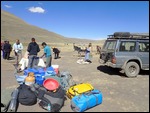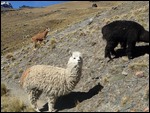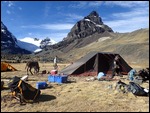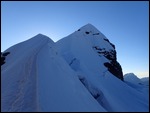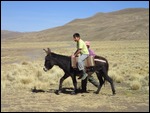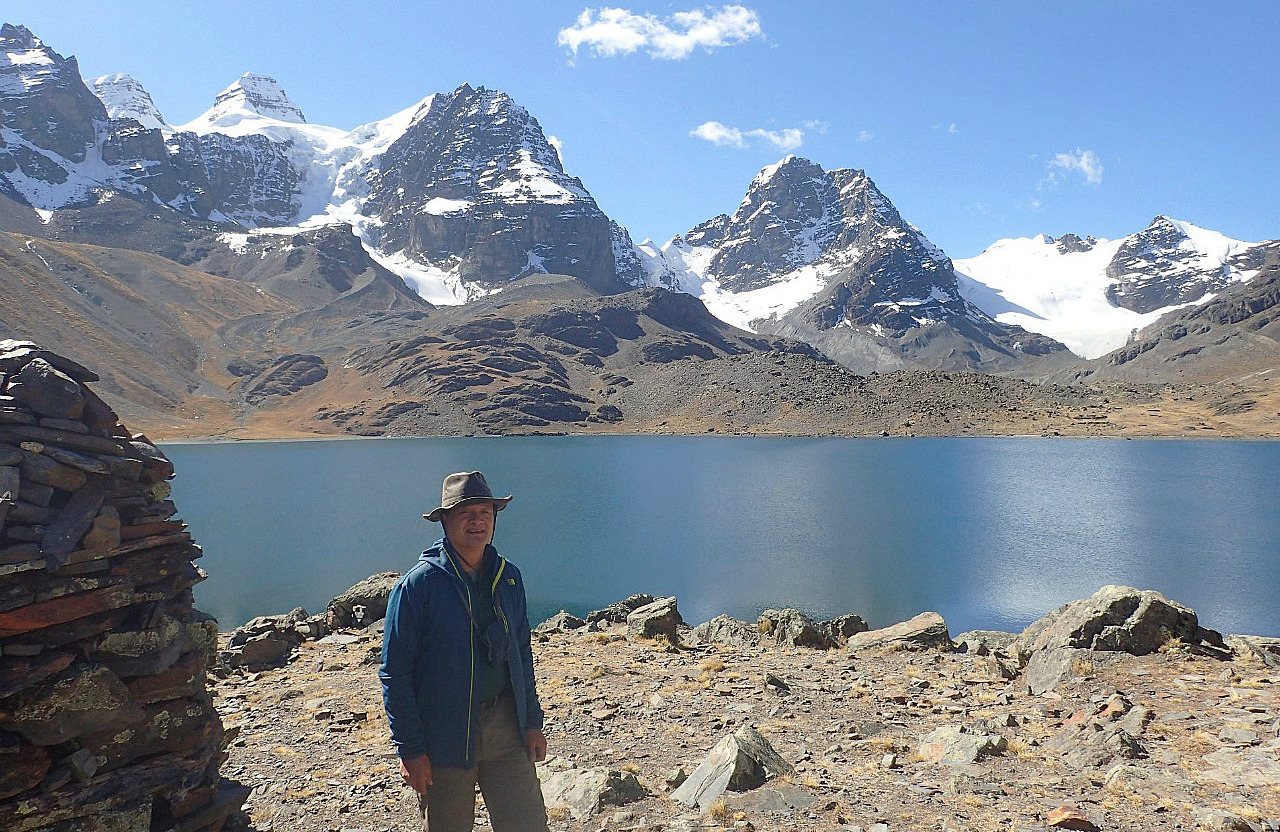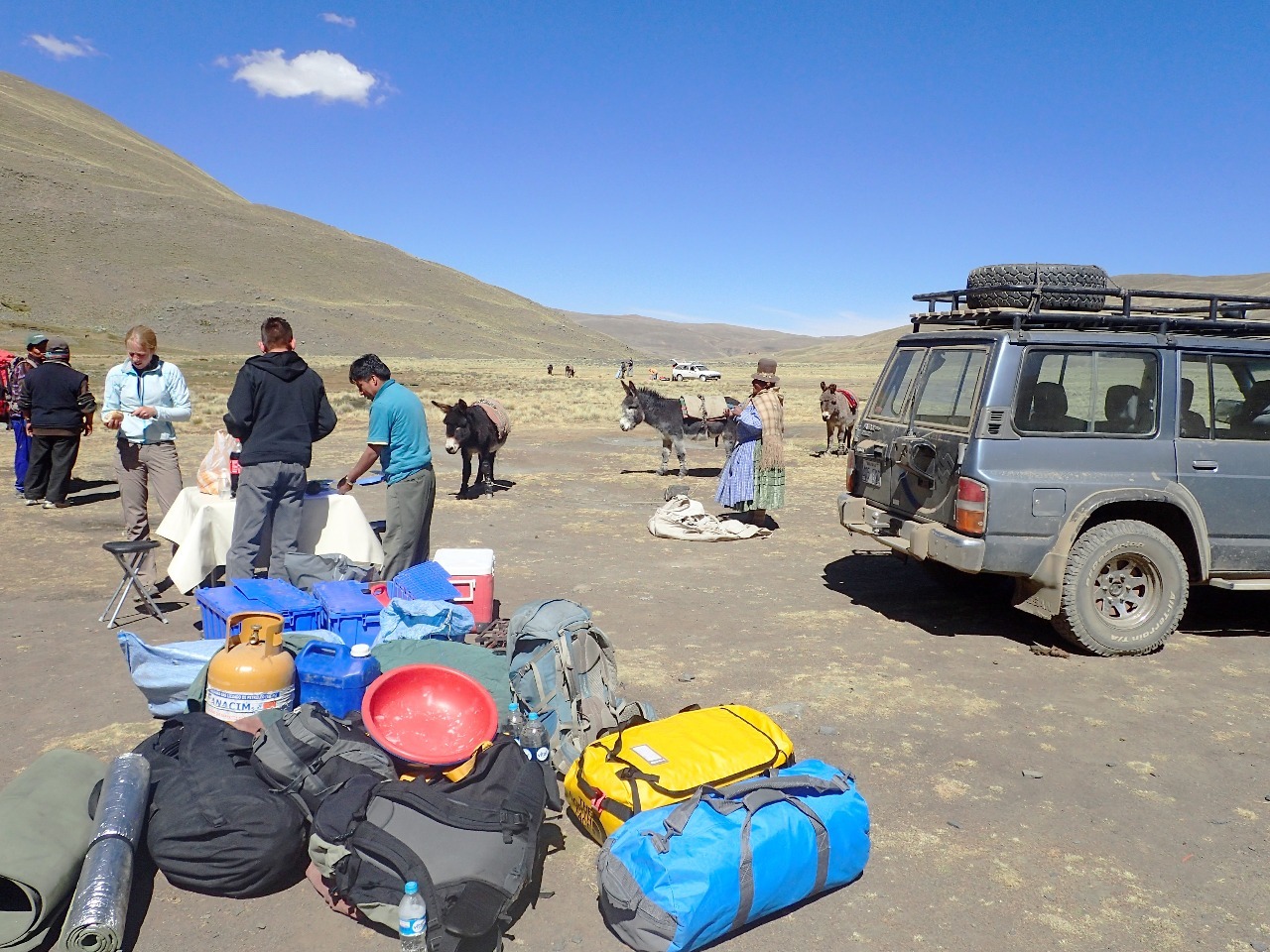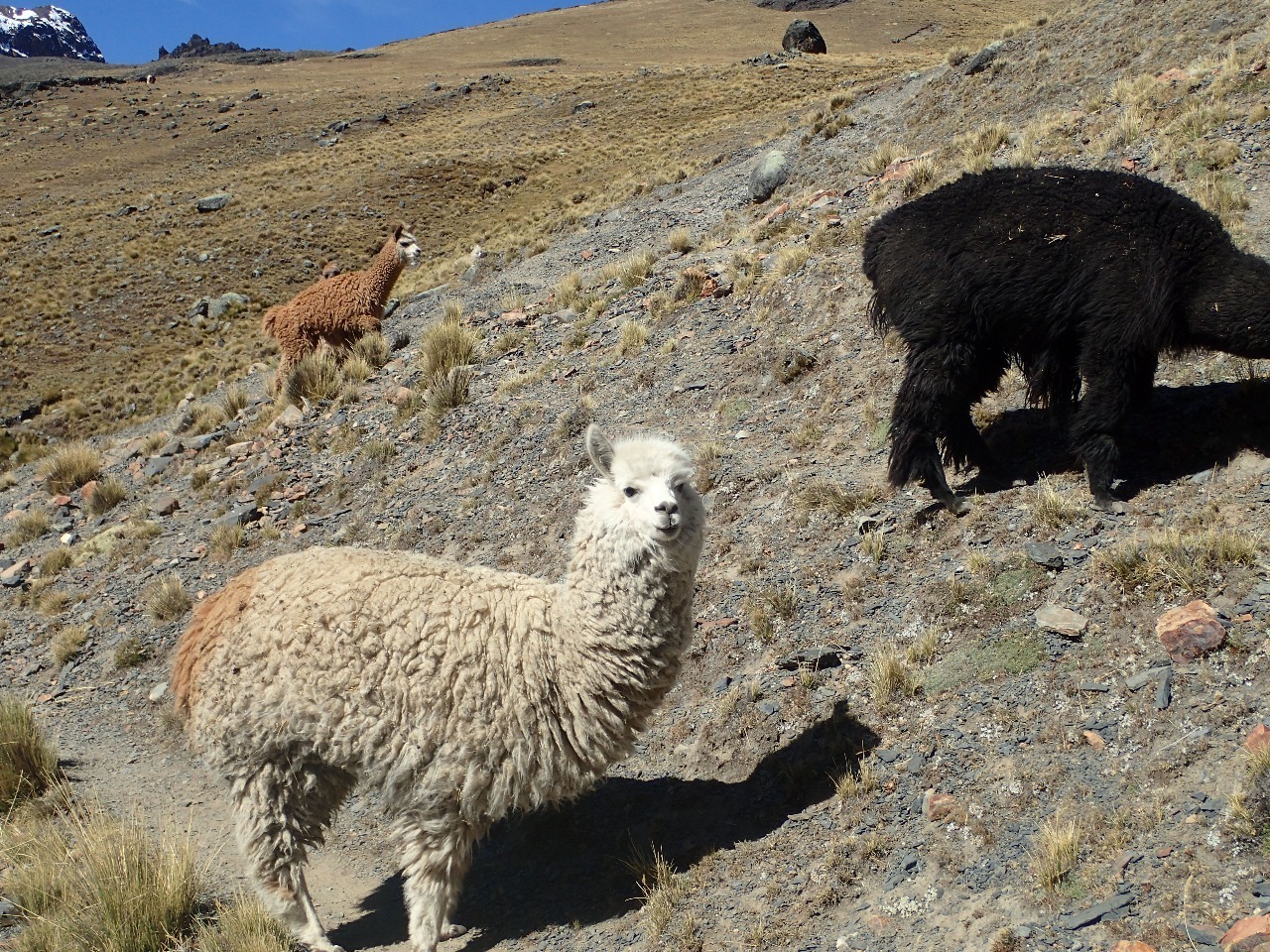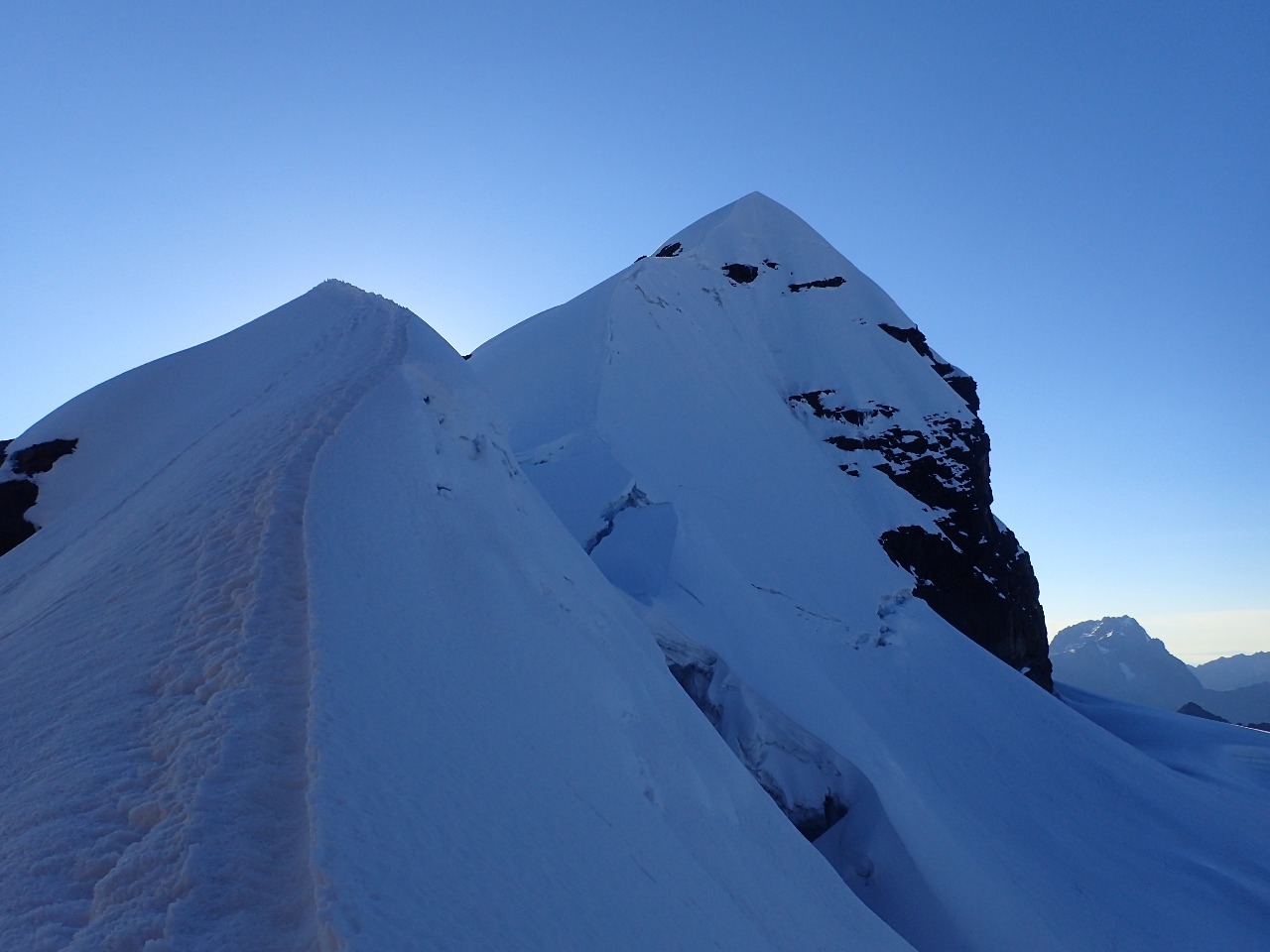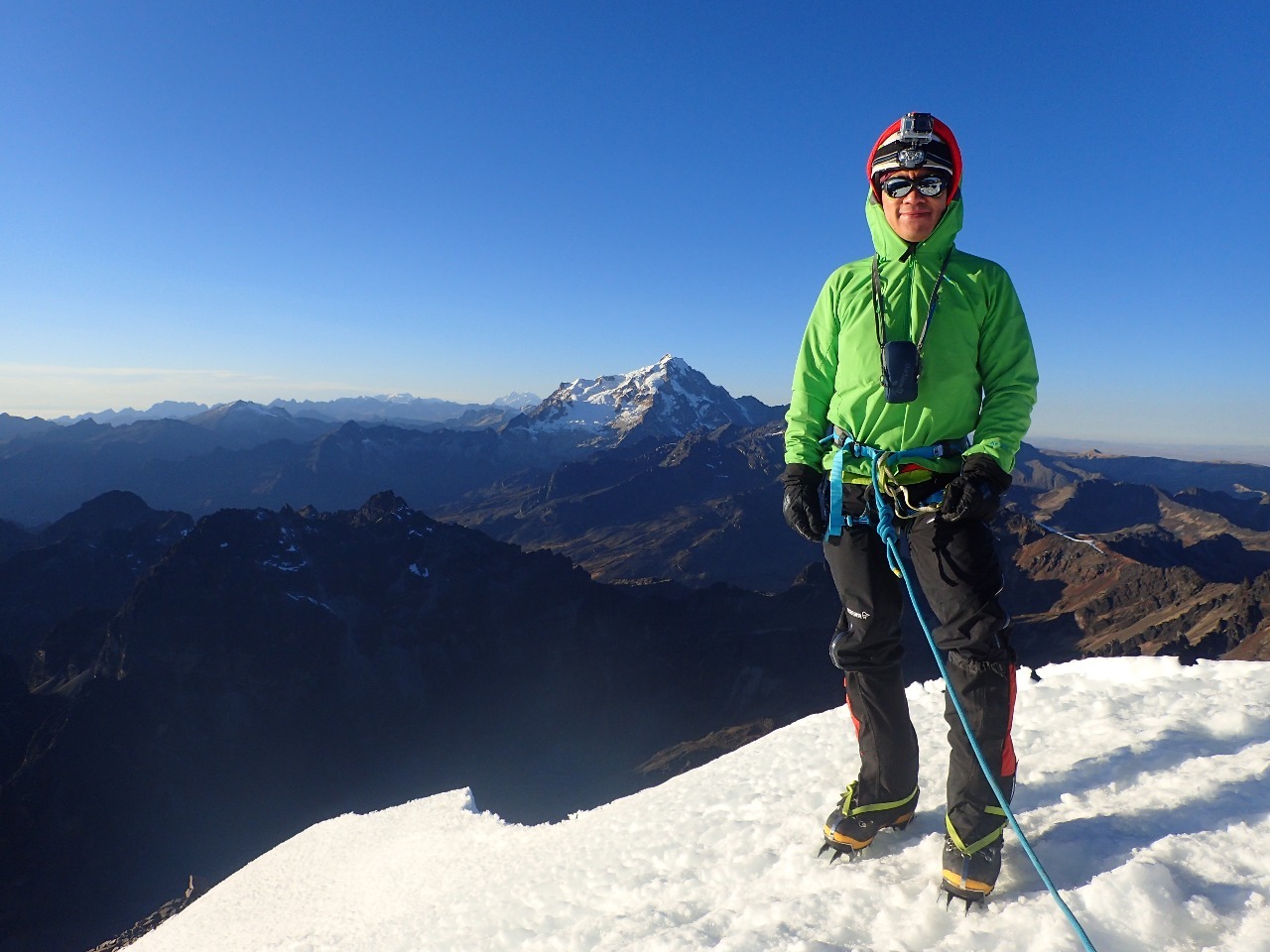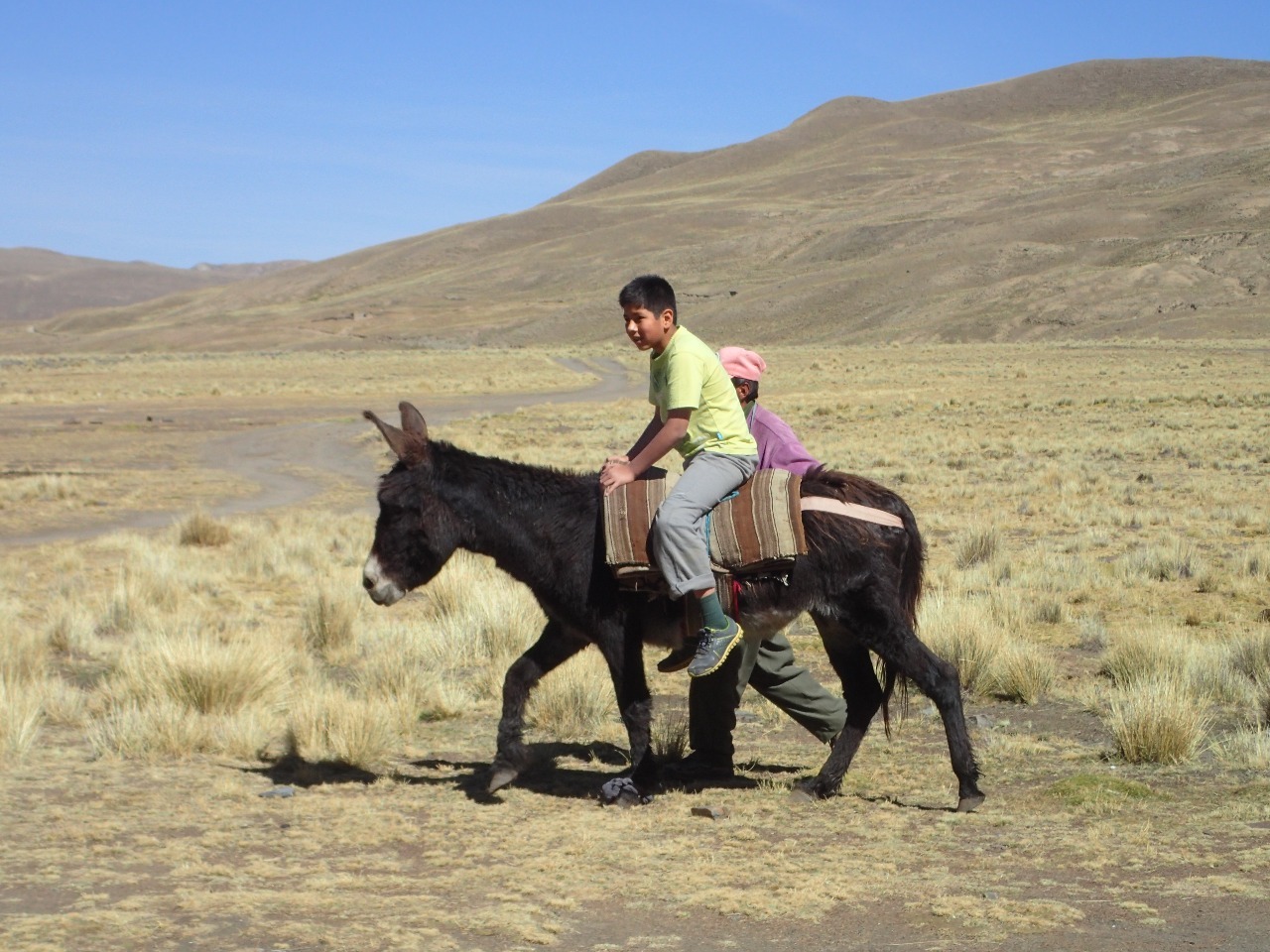We met our mountain guide Rachel at the hotel lobby in the morning, all dressed and packed for the training hike to Pequeno Alpamayo. This will be a two day expedition to the Condoriri area of the Andes, about 3 hours drive north of La Paz. Our jeep driver Enrique and our camp cook Ricardo showed up soon after. and we headed out of the city to the Altiplano (High Plains) averaging 4000 meters elevation.
Driving past the sprawling suburb El Alto -- home to nearly a million Aymara Indians, we were surrounded by a treeless plain with vistas of a snowy chain of peaks on the horizon. The jeep passed numerous native villages and people going about daily life, women in colorful dress occasionally walking along the paths. The weather was sunny and the vistas clear and crisp. As we got closer to the Andean peaks to the northeast, individual peaks presented themselves - first Huayna Potosi -- the most popular peak in Bolivia for mountaineering. Finally we approached the Condoriri group of peaks resembling a condor's head in the middle crowned with white snow on a narrow summit, flanked by two lower summits with darker rock bands resembling wings of the condor.
We arrived at the end of road, unloaded our packs onto a train of burros, had a picnic lunch of sandwiches with ham, cheese, and avocado, then started hiking with Rachel and Richardo toward the Condoriri base camp. The hike brought us to first to a lake, then another -- a jewel of a glacial lake named Chiar Khota (Black Lake), reflecting the majestic Condoriri peaks. Elegantly furry alpacas and llamas grazed lazily on the hillside, curiously took a look at us then went back to grazing. After a short hike we arrived at the far side of the lake to set up camp, at elevation 4700 meters (15,400 feet). The setting was simply gorgeous - snowy peaks alternate with black rock soaring very steeply skyward. A source of water was piped from the glacier, and the toilets were enclosed rooms with porcelain commodes that could be flushed by water stored in a big jar. Very surprised at the level of comfort at this camp.
We planned to get up at 2 am to start the 3 mile, 2500 feet climb to Pequeno Alpamayo. We went to bed after having a big dinner, but when I woke up I got really sick with vomiting and diarrhea symptoms. I realized I was not in condition to do this climb -- apparently my altitude acclimatization was not enough after only two days since arriving from sea level. When I entered the tent where Ricardo was serving breakfast, I saw he and Rachel hurriedly working on activating the heavy oxygen tank. The life-saving oxygen was intended to help someone experiencing altitude sickness. I told them that I was sick but not severely, and that I was ok with not doing the climb. Rachel and Mike were relieved because if I were to insist on going with them on the climb, it would be very dangerous not only for myself but for the two of them as well. Any extra effort worrying about rescuing a buddy would certainly reduce their chances of making the summit. Seeing Rachel and Mike off to the climb, I went back into my tent feeling horrible and very discouraged, continuing to be tormented by symptoms that I frankly thought I was too healthy to ever experience.
Having had some rest and continuing to take medication, my symptoms finally subsided except for the nausea. By day break I felt quite a bit better and was able to walk around. It was just before midday when Rachel and Mike came back after successfully summitting the 17,618 feet Pequeno Alpamayo, our training peak. Mike was very exhausted but happy to have succeeded climbing the steep summit, technically rated a bit more difficult than Mount Illimani's summit. Mike realized how demanding Illimani would be due to its larger elevation gain, and already started to worry about whether my fitness level was good enough. Mike learned from other parties they met on the way that most people from America or Europe would take a week to acclimatize, by trekking between the camps but not attempting climbs. They were amazed that Mike summitted Pequeno Alpamayo after just two days in Bolivia.
Our short hike back from base camp in the afternoon was a beautiful, relaxing hike. On the way back to town sitting in Enrique's jeep, I saw a distant yet spellbinding view of the vast Lake Titicaca, the world's largest high altitude lake. We planned to visit it on the last day of our Bolivia trip, but stormy weather prevented us from going on a tour to Titicaca, it will have to be the next trip. My sickness at the camp inspired me to take more precaution about what I eat and drink, day to day. Back in La Paz the next day I purchased antibiotic from the pharmacy in downtown to treat digestive problems. The fact that I didn't get a chance to practice climbing on Pequeno Alpamayo became my undoing later on, unfortunately.

